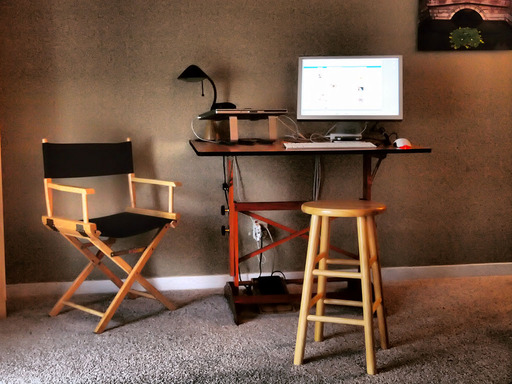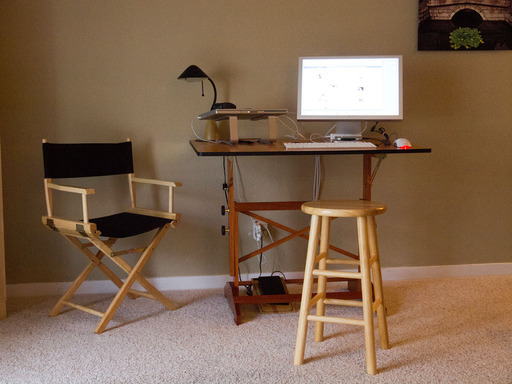I've been testing the new Olympus E-5 Digital SLRthat has pro-level construction, but lots of creative features that you often don't see on this type of camera. One of those features is a complete set of art filters (pop art, soft focus, grainy film, pin hole, diorama, cross process, dramatic tone, and more).
 The new Dramatic Tone art filter on the Olympus E-5 converts even a mundane image into something more interesting. Click on photo for larger version.
The new Dramatic Tone art filter on the Olympus E-5 converts even a mundane image into something more interesting. Click on photo for larger version.
The capture process is straight forward. You pick one of the art filters from the menu, and the E-5 adds the effect in-camera. You don't have to do any manipulation yourself. I shoot in Raw so I get the original unadulterated image, and I get the Jpeg art filter version.
 If you're shooting Raw, you also get the non-art filter version so you have access to both images.
If you're shooting Raw, you also get the non-art filter version so you have access to both images.
There are interesting applications for art filters. I think they can help you explore the possibilities of a composition while you're still in the field. If you see something you like, you can further fine tune based on the "art filter preview" you've created. Art filters may also help photographers who don't enjoy post production manipulation add some spice to their catalog. And with the advent of the iPad, you can shoot something artistic and upload it easily right on the spot.
So, my question to you, would you use art filters on your DSLR? You may have them now and not even realize it. We're seeing them more than ever. Is that based on user feedback or are manufacturers trying to distinguish their hardware from others? Let me know what you think.












If this were 'real' filters like the Cokin kind or screw-in ones, yes. But so far I've had plenty of similar filters on my LX3 and while they're neat, I haven't used them except to mess around. But, then again, I love use Aperture and tinkering there, so I'm probably not the use case. Though, if there were somehow an easy way to replicated a graduated ND filter, I'd be all over it! :)
I hear some cameras (such as the Nikon P7000) have an in-built ND filter, and I would find this much more helpful, as you can't necessarily replicate this effect during post-production.
I use an E-PL1 with the Panasonic 20mm f1.7, and sometimes the shutter speed limit of 1/2000 sec is too slow. The ND filter would help a lot (and still work in RAW).
For me "art filters" in a pro body are a complete waste of firmware. They just unnecessarily complicate the UI. Manufacturers should save the development effort for better DNG support or something. Besides, I try to avoid pushing any more buttons or any other fiddling around on the camera itself as much as possible. It's way too hard to do anything meaningful on a camera body without a keyboard, mouse and real screen.
My workflow *always* includes LR and PS, so I get real processing power. "Art filters" are always going to be rinky-dink affairs, a pale imitation of what can be accomplished with decent software.